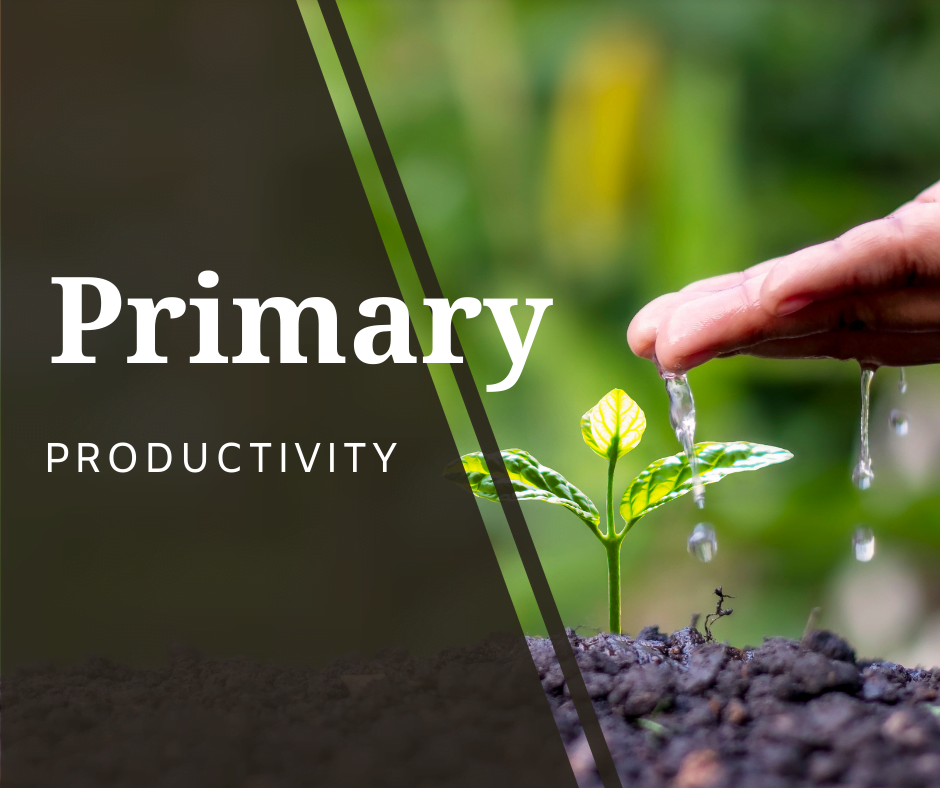Introduction
In the intricate tapestry of Earth’s ecosystems, there exists an essential process that sustains life as we know it – primary productivity. This remarkable phenomenon fuels the biosphere, shaping the abundance and diversity of organisms across the planet. This article will delve into the fascinating world of primary productivity, exploring its definition, factors influencing it, and its significance in ecological systems.
1. What is Primary Productivity?
Primary productivity refers to the rate at which autotrophic organisms, such as plants, algae, and some bacteria, synthesize organic matter through photosynthesis or chemosynthesis. It represents the conversion of solar energy into chemical energy stored in organic compounds, such as sugars and carbohydrates. In essence, primary productivity is the engine that drives the energy flow within ecosystems.
2. Types of Primary Productivity
2.1 Terrestrial Primary Productivity
Terrestrial ecosystems encompass forests, grasslands, and deserts, among others. Each habitat exhibits varying levels of primary productivity influenced by factors like temperature, water availability, and nutrient content in the soil. Forests, with their lush canopies and diverse plant species, often exhibit high primary productivity due to favourable conditions for photosynthesis. Grasslands also possess significant productivity, while deserts experience lower rates due to limited water availability.
2.2 Aquatic Primary Productivity
Aquatic ecosystems, including oceans, lakes, and rivers, host a plethora of organisms that contribute to primary productivity. Phytoplankton, microscopic plants floating in water, form the foundation of aquatic food chains. They harness sunlight to create energy-rich organic compounds, supporting an array of organisms. Coastal areas and up-welling zones exhibit high primary productivity due to nutrient-rich waters, while open oceans have relatively lower productivity levels.
3. Factors Affecting Primary Productivity
Several factors intricately interact to influence primary productivity in ecosystems:
3.1 Sunlight and Photosynthesis
Sunlight is the primary energy source for photosynthesis. It is the process by which autotrophs convert carbon dioxide and water into organic matter. Availability of sunlight affects the rate of primary productivity, with higher intensity and duration promoting increased photosynthetic activity.
3.2 Nutrient Availability
Essential nutrients like nitrogen, phosphorus, and potassium are crucial for plant growth and photosynthesis. Inadequate nutrient availability can limit primary productivity, leading to stunted plant growth and reduced energy production.
3.3 Temperature and Climate
Temperature profoundly impacts the enzymatic reactions driving photosynthesis. Optimal temperature ranges vary among plant species, and deviations from these ranges can hinder their productivity.
Climate patterns such as precipitation and temperature fluctuations influence primary productivity.
3.4 Water Availability
Water is vital for photosynthesis, as a medium for nutrient transport and facilitating plant chemical reactions. Insufficient water availability, droughts, or flooding events can significantly impact primary productivity in both terrestrial and aquatic ecosystems.
3.5 Carbon Dioxide Levels
As a key ingredient for photosynthesis, the concentration of atmospheric carbon dioxide directly influences primary productivity. Elevated carbon dioxide levels can stimulate photosynthetic rates, leading to increased productivity, although other limiting factors may still come into play.
3.6 Biotic Interactions
Interactions between organisms, such as competition, predation, and symbiosis, can affect primary productivity indirectly. For instance, herbivores consuming plant biomass can limit plant growth and productivity, while mutualistic relationships between plants and pollinators can enhance productivity through efficient pollination.
4. Measurement Methods
To quantify primary productivity, scientists employ various techniques, including:
- Biomass Harvesting: Collecting plant samples and measuring their dry weight to estimate the amount of organic matter produced.
- Oxygen Production: Measuring the release of oxygen during photosynthesis as an indicator of primary productivity.
- Remote Sensing: Using satellites to assess the vegetation index, which indicates the density and health of plant cover.
5. The Significance of Primary Productivity
Primary productivity is a fundamental process that sustains life and maintains ecological balance. Its importance can be observed in several key aspects:
- Energy Flow: Primary productivity forms the basis of food chains and energy transfer in ecosystems, supporting the survival and growth of organisms at higher trophic levels.
- Biodiversity: Regions with high primary productivity often exhibit greater species diversity and abundance, as abundant energy resources can support a larger number of species.
- Oxygen Production: Photosynthesis during primary productivity plays a vital role in the oxygen cycle, replenishing atmospheric oxygen levels.
- Carbon Sequestration: Through the uptake of carbon dioxide, primary productivity helps mitigate climate change by storing carbon in plants and soils.
- Ecosystem Services: Productive ecosystems provide numerous benefits to humans, including food, raw materials, clean water, and recreational opportunities.
6. Primary Productivity and Global Carbon Cycle
Primary productivity and the global carbon cycle are closely interconnected. As plants photosynthesize and fix carbon dioxide, they remove it from the atmosphere, contributing to carbon sequestration. Carbon stored in plant biomass can then be transferred to the soil through decomposition or stored in forests for extended periods. Understanding primary productivity is crucial for accurately estimating carbon budgets and predicting the effects of climate change.
7. Impacts of Human Activities on Primary Productivity
Human activities have significantly influenced primary productivity worldwide. Activities such as deforestation, urbanization, and pollution can disrupt natural ecosystems, leading to reduced primary productivity. Additionally, the release of greenhouse gases, including carbon dioxide, alters climatic conditions, potentially affecting primary productivity patterns on a global scale.
8. Enhancing Primary Productivity for Sustainability
Recognizing the importance of primary productivity, efforts are underway to enhance and sustain it for a more resilient future. Strategies include:
- Conservation and Restoration: Protecting natural habitats and restoring degraded ecosystems help preserve biodiversity and promote healthy primary productivity levels.
- Sustainable Agriculture: Adopting agricultural practices that prioritize soil health, minimize chemical inputs, and embrace efficient water management can enhance primary productivity while reducing environmental impacts.
- Climate Change Mitigation: To safeguard primary productivity in the face of global challenges, we must reduce greenhouse gas emissions and implement measures to adapt to changing climatic conditions.
Conclusion
Primary productivity lies at the core of the Earth’s biological systems, providing the energy and resources necessary for life to thrive. From lush forests to bustling coral reefs, the primary productivity rate shapes ecosystems’ vibrancy and resilience worldwide. By understanding its intricacies, we can better appreciate the delicate balance that sustains our planet and work towards nurturing and preserving the engine of life.
FAQs
1. Why is primary productivity important for ecosystems?
Primary productivity is crucial for ecosystems as it provides the energy and resources needed for the survival and growth of organisms. It forms the foundation of food chains, influences biodiversity, and contributes to essential ecosystem services.
2. How is primary productivity measured?
Scientists use satellites to measure primary productivity, including biomass harvesting, oxygen production measurements, and remote sensing techniques.
3. Can human activities impact primary productivity?
Yes, human activities such as deforestation, pollution, and climate change can significantly affect primary productivity. Disruptions to natural ecosystems can lead to reduced productivity levels and ecological imbalances.
4. How can primary productivity be enhanced for sustainability?
Enhancing primary productivity for sustainability involves
– conserving and restoring natural habitats,
– adopting sustainable agricultural practices, and
– mitigating climate change through emissions reduction and adaptation measures.
5. What is the role of primary productivity in the carbon cycle?
Primary productivity plays a vital role in the global carbon cycle. It removes carbon dioxide from the atmosphere through photosynthesis, storing carbon in biomass, and contributing to carbon sequestration and climate change mitigation.

